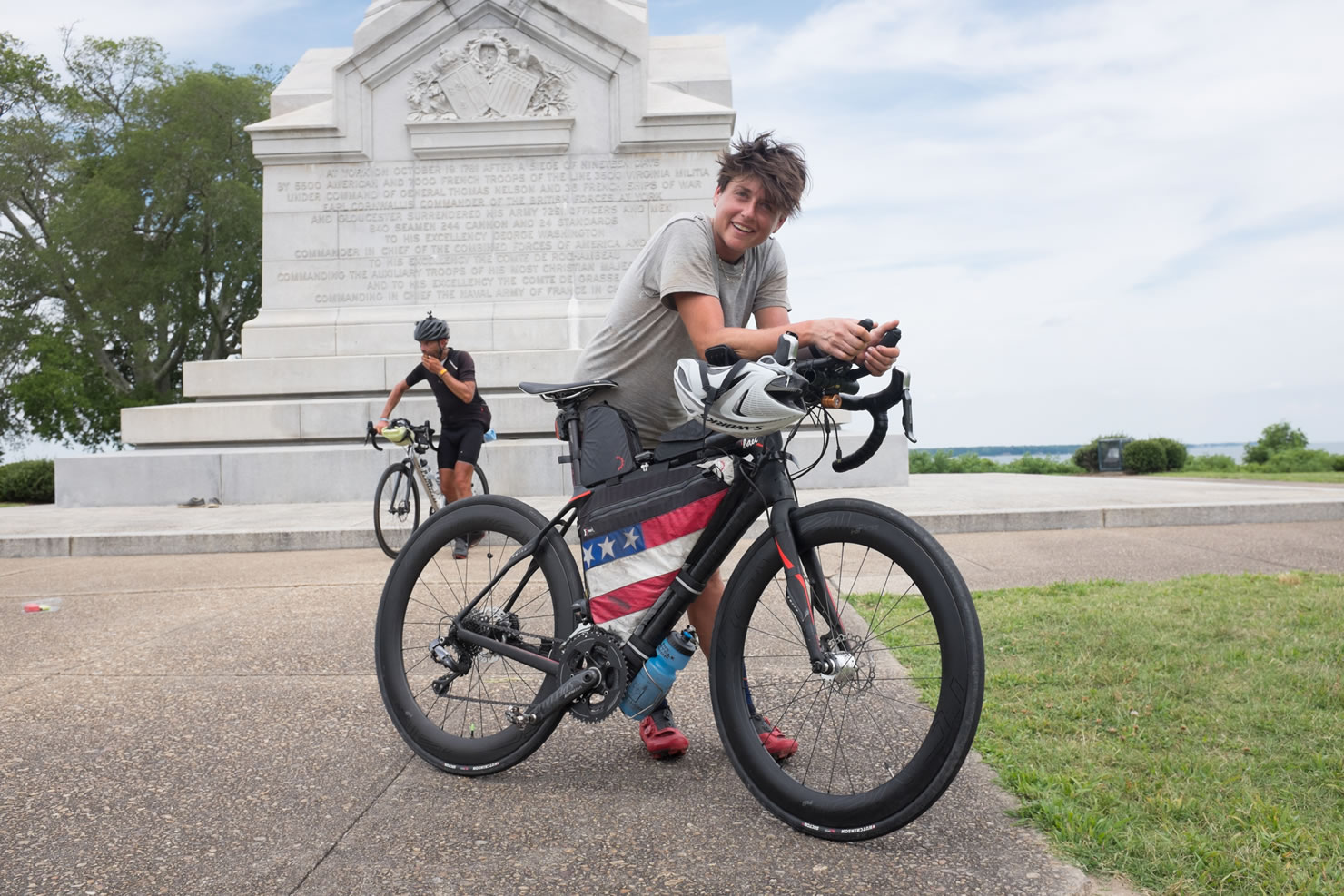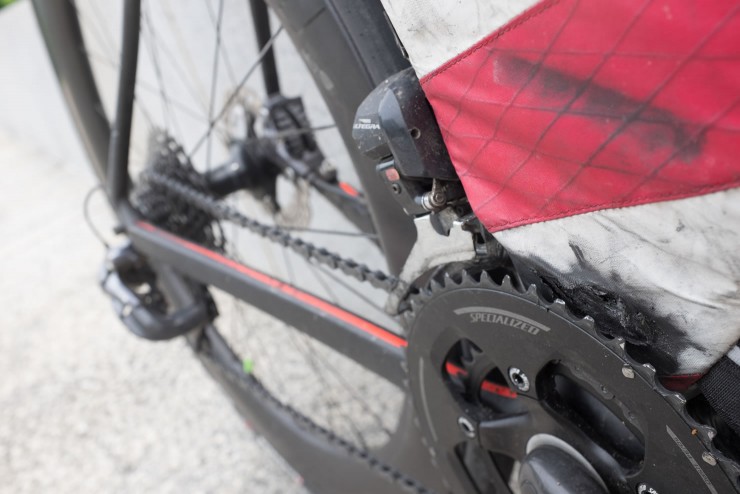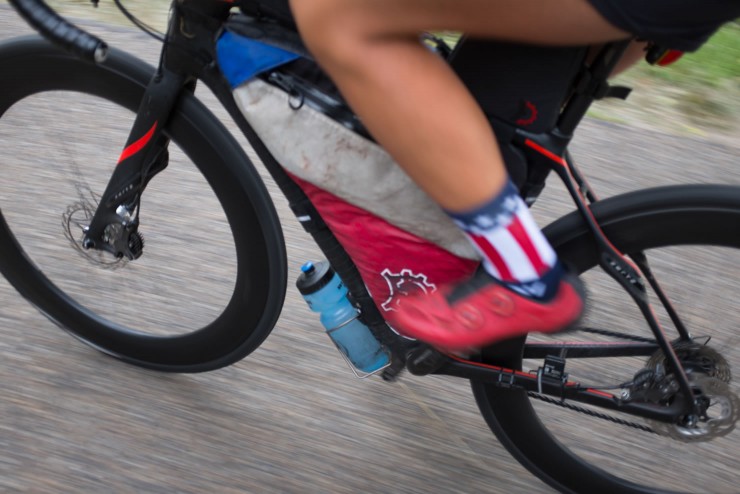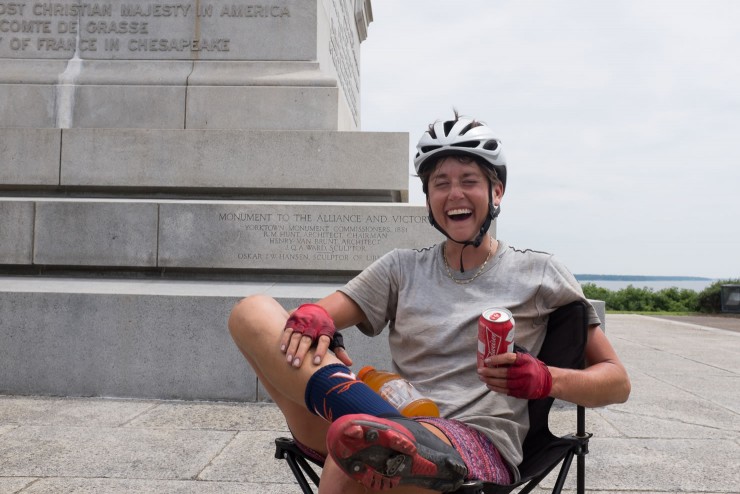Lael Wilcox: A Trans Am Gear List and post-race Q&A
After some awe inspiring twists and turns in the final days leading up to the end, Lael Wilcox finished the Trans Am Race in 18 days and 10 minutes becoming the first American to win the race. We talked with Lael about her gear list, health, and the route itself. Here’s what she had to say…
For those unaware, the Trans Am Race is a 4,400 mile self supported ultra-endurance bikepacking event that started in 2014 and crosses the US via 10 states on the Trans America Trail. If you were following the Trans Am in the final few days, you were probably as dumbfounded as we were. According to Nicholas Carman’s report, “Lael averaged 235 miles per day for 18 days, resting an average of 3-5 hours of sleep per night. On the final two nights of the race, Lael scaled back sleep to ride over 400 miles in about 33 hours. Her efforts put her within 20 miles of the leader, Steffen Streich, who awoke from a 2.5 hour sleep on the last night and made a fatal mistake. He got on his bike and began riding the route backwards. The two met soon thereafter, on a dark road in rural Virginia near the community of Bumpass.” Lael then sprinted the final hours of the race to win the Trans Am in 18 days and 10 minutes. She is the first American to win the Trans Am Bike Race, her time is the second fastest in race history, and it beat the former women’s record by almost 3 days. After this inspiring performance, we had a ton of questions for Lael. Here are her thoughts…
A race like the Trans Am is obviously a sum of months of preparation, and over two weeks of hard riding. But a lot happened in the last couple of days – can you give us a synopsis?
To be honest, early on in the race I didn’t feel like I was doing very well. The leaders were over a 100 miles ahead of me, maintaining a faster pace and sleeping less. I really hit my stride in Missouri when the terrain got tougher. I felt like I was always just hanging on, waiting for an opportunity. But I continued riding hard and I slowly gained ground. The opportunity didn’t come until the final 130 miles of the race when I caught the leader. I had been chasing this guy for two weeks. I was so excited when I finally caught him that I started sprinting as fast as a could.
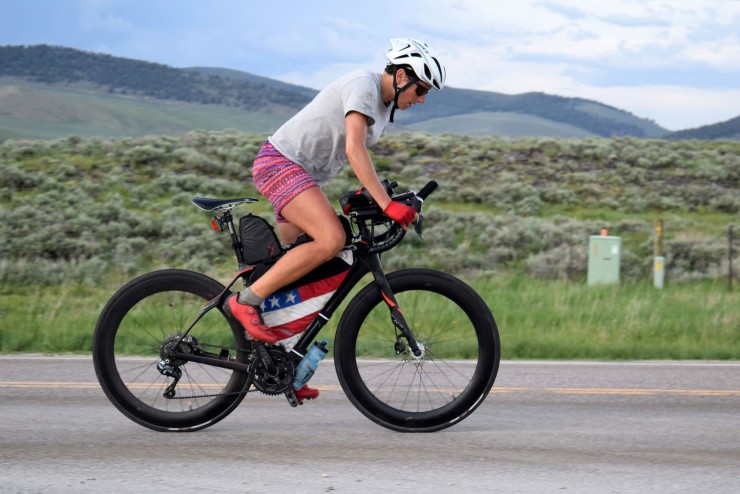
Again you rode to the start of a big race. Is this something you do in preparation… a ritual of sorts?
Riding to the start is great preparation. It gets my mind and body ready for so much saddle time. It’s a great transition to spend so much time outside– I get more tuned to the weather. I was also on a new bike, so I wanted to make sure everything fit and worked well.
What would you consider the the biggest challenges of racing the Trans Am?
It’s long! You have to strategize for the long haul, to take advantage of good conditions like tailwinds and deal with mechanical failures. You have to stay focused on keeping a strong pace and staying on the bike and staying healthy. The west is fairly easy with long gradual climbs. The east is incredibly hilly and steep. The race really changes after Kansas. The temperature was in the high 90s for several days– it was really hot out there.
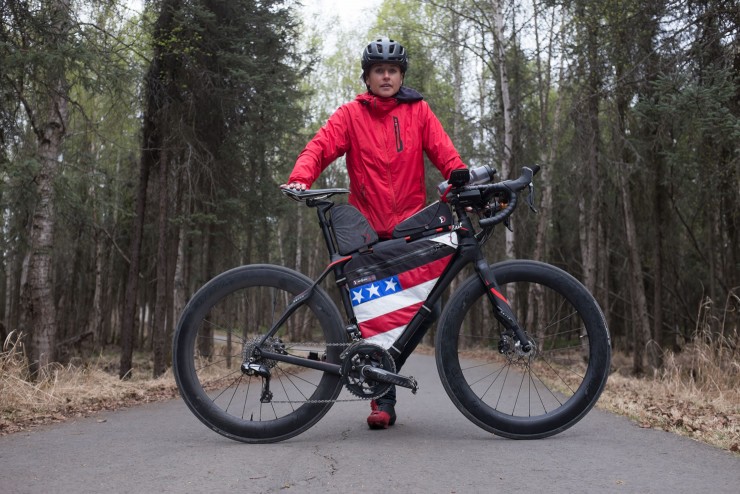
Is there any particular reason you chose the Specialized Ruby you raced on? What changes did you make to it, and why?
I chose the Specialized Ruby Pro Disc UDi2 because it’s a women’s specific endurance road bike. My mom has a Ruby that I borrowed a couple of summers ago to do some long distance road riding in Alaska. I knew the fit was good. I selected this specific model because it comes with disc brakes. Specialized built me a custom CLX64 dynamo front wheel with deep rims for aerodynamics. These wheels are tubeless ready, relatively light, and aero. The bike came with electronic shifting which functioned great, but the battery life was shorter than expected. I needed to charge it about every 800 miles. I ended up staying in motels for the first time on an endurance race.
Navigational foibles proved an issue for a couple of the competitors. Can you tell us your strategy to cover yourself for such eventualities?
I used a Garmin etrex 20 and brought a spare just in case. There were a few route detours due to construction, but navigation was pretty easy on the road. In the past few years I’ve become very comfortable using the eTrex. Two years ago I didn’t have the confidence to navigate by myself, but now I do.
Even though you were moving really quickly, did you have time to enjoy the route? Which part(s) was your favorite?
The cool thing about riding the route fast is that you get to see so much change every single day. My favorite state was Missouri. I had a great ride through Yellowstone and the Tetons. I liked the farm county in the brief section of Illinois and the open plains in Kansas were stunning. It’s an awesome route.
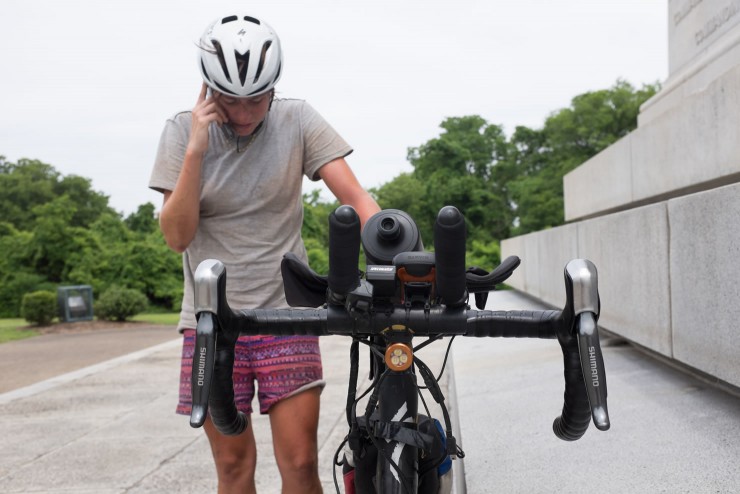
A race like this must involve both physical and mental challenges, given the long miles and speed at which you’re riding. Which proved greater? How do you keep positive under that kind of stress?
I rode about half of the route with Evan Deutsch. I’ve never ridden with anyone in a race before we kept leapfrogging each other for the first five days, our paces matched so well that we decided to ride together. It was really nice to have somebody to ride with through the nights and we kept each other in good spirits. Negativity will get you nowhere in these races. You have to keep a good attitude and deal with challenges as they arise. I had some mechanical issues during this race. I cut two tires, my Di2 battery died twice at innopportune times and my seatpost broke. Everyone faces different challenges during these races. For the most part, I really enjoyed myself out there. I feel relaxed and happy. I stayed healthy for the entire race. My knees ached for the first week, but it went away.
Give us some nuts and bolts of the ride; e.g. how many miles per day, where you slept, how long you slept, average speed, etc. Did you have set destinations/resupply points you were aiming for – or was mostly of it off the cuff? Were you familiar with any of the terrain?
I averaged 235 miles per day. I probably slept half the nights in motels and half of the nights in my bivvy. I didn’t bring a sleeping bag or a sleeping pad so I woke up a few nights shivering at elevation in the west and got back on my bike to ride. My average speed was 12 mph. I resupplied entirely at convenience stores. I ate a lot of granola bars and pizza and drank a lot of chocolate milk. The route was entirely new to me.
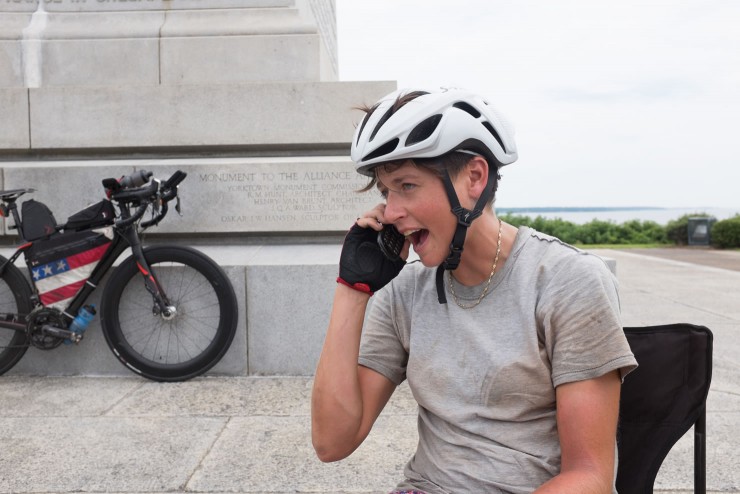
Medical setbacks have upset some of your past performances. It seems like you completed this race with a clean bill of health. What changed?
I brought an albuterol inhaler. The weather was hot and very humid in the east and that made it easier to breathe. Since it was on the road, there was a lot less dust in the air. I didn’t go out super fast which allowed my body to adjust to the race, and I got stronger throughout the race. I was so happy to be healthy.
You rode with Evan Deutsch through part of the ride. How did this impact the experience? Did it motivate you to ride faster? Did the companionship make the miles go quicker?
I had a great time riding with Evan. It was especially nice for night riding on the road. It felt safer to have two people with two sets of lights. It definitely made some of the time pass more quickly.
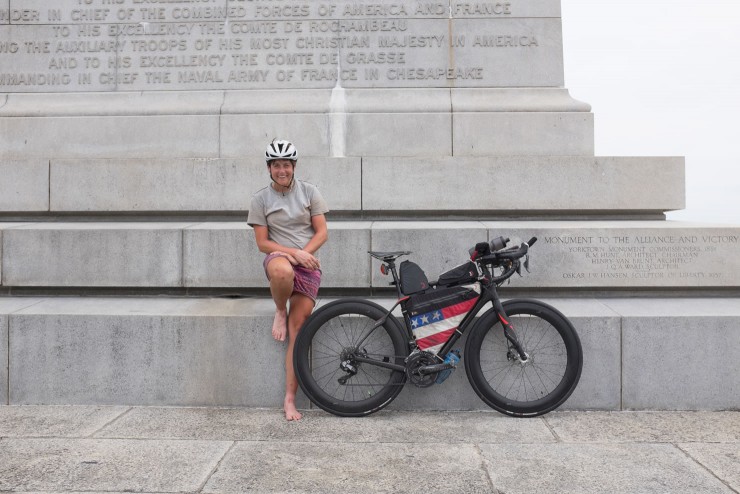
Too early to comment on future plans? Can you see yourself returning to race again? Or will you be heading for new pastures?
I’m riding out of Yorktown with Nick in the next couple of days, heading for upstate New York. We fly to Bozeman in early July to ride to Missoula for Adventure Cycling’s Montana Bicycle Celebration from July 15-17 and will head back to New York in late July. We’re excited to invite people to meet us in San Diego on January 2, 2017 to ride the Baja Divide, although the route will soon be published and will be open to ride at any time. I don’t have any race plans — I’m always up for a good challenge.
Gear List
How was your kit; what worked and didn’t work; what would you change, if anything? Were there any major mechanicals throughout the race that set you back?
I sliced two tires and had a seatpost failure. In retrospect I should’ve used my Syntace P6 seat post. The Di2 electronic shifting worked great, but having to maintain a charge was a bit stressful and set me back a couple of times. I’d like to find a solution to charge the shifting on the bike. I started the bike with a Busch & Muller E-Werk charger that I intended to use to charge my GPS. It failed within the first 100 miles and I relied on batteries. The western portion was fairly cold in the nights, I could’ve used some sort of sleeping pad to keep me off the ground.
- Frame: Specialized Ruby Pro Disc UDi2 54 cm
- Wheels: Roval CLX64 wheels, tubeless ready
- Hub: SP PD-8 24h dynamo hub
- Tires: Hutchinson Sector 28 tubeless road tires
- Drivetrain: Ultegra Di2 electronic/single remote shifter on aero bars
- Cassette: 11-32 T cassette
- Brakes: Shimano Hydraulic brakes, 140 mm rotors
- Crankset: S-Works carbon crank 50/34T
- Pedals: XTR race
- Saddle: Specialized Ruby Expert
- Aerobat: Specialized ski bend carbon
- Headlight: K-lite Bikepacker Pro headlight
- Taillight: Night Rider blinkie taillight
- Framebag: Revelate Designs custom framebag
- Top tube bags: Revelate Jerry can and magnetic closure gas tank
- GPS: Garmin etrex 20
- Computer: Specialized speed and cadence cycling computer
- Shelter: Montebell Breeze Tech UL bivvy
- Pump: Lezyne HP road pump
- Headlamp: Princeton Tech Byte headlamp
- Bottle Cages: King Cage top cap bottle mount, taped cage under down tube
- Waterproofs: Patagonia M10 rain shell, Patagonia Alpine Houdini pants
- Shoes: S-Works XC MTB shoes
- Tire Repair: 2 tubes, 1 tire boot, 2 oz Stan’s, superglue, valve extenders, Pedro’s lever, patch kit
- Spares: Derailleur hanger, Di2 battery, Di2 cable
- Electronics: Di2 charger, Cell phone charger
- Multitool: Lezyne multitool
- Other: Presta/schrader valve adapter, 11 speed quick link
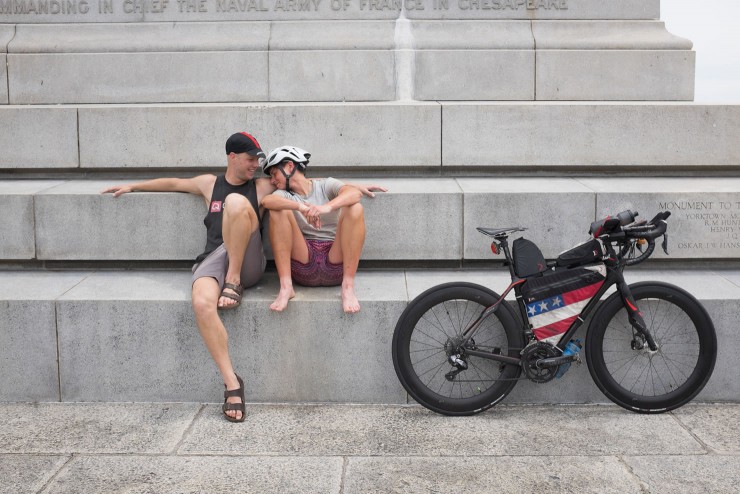
Any sponsors or people you’d link to thank?
I’d like to thank Nicholas Carman for setting up my bike and preparing me for this race, Evan Deutsch for his great attitude, Nathan Jones for putting on the race, Specialized for a killer bike and gear, Revelate Designs for the coolest framebag ever made, Patagonia, K-lite, Intelligent Design Cycles, Mike Shupe and The Bicycle Shop in Anchorage, AK, and my parents.
Congrats Lael, and thanks for sharing your experiences. And thanks to Nicholas Carman for the photos and great coverage during the race. Also thanks to Anthony Dryer for several of the on-bike/riding photos above.
FILED IN (CATEGORIES & TAGS)
Inspiration
Culture
Bikepacking Gear Lists
bikepacking-ultra-racing lael-wilcox revelate-bagsPlease keep the conversation civil, constructive, and inclusive, or your comment will be removed.






